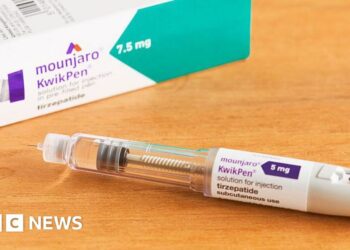PHOENIX — Historically, optic nerve involvement has been excluded from multiple sclerosis (MS) diagnostic criteria, but its inclusion in the upcoming 2024 McDonald Diagnostic Criteria is expected to significantly accelerate the time to definitive diagnosis in patients with clinically isolated syndrome (CIS).
Driven by advances in imaging protocols and the evidence that it improves diagnostic specificity, “the optic nerve will now be included as a fifth topography,” said Peter Calabresi, MD, director of the Multiple Sclerosis Center, Johns Hopkins Medicine, Baltimore.
Although this is just one change from the 2017 McDonald Diagnostic Criteria aimed at facilitating diagnosis, those involved in the 2024 revisions consider the addition of this fifth topographical sign among the most significant, said writing committee members Calabresi and Jiwon Oh, MD, PhD, medical director of the Barlo Multiple Sclerosis Program at St. Michael’s Hospital, University of Toronto, Toronto.
Specifically, optic nerve lesions will make it easier to fulfill the dissemination in space (DIS) principle, a pivotal concept for delivering a diagnosis of MS in patients with CIS, said Calabresi at a May 29 symposium here at the Consortium of Multiple Sclerosis Centers (CMSC) 2025 Annual Meeting.
Context Still Key
Citing several studies published since 2017, Calabresi noted that incorporating optic nerve lesions into the DIS criteria increases diagnostic sensitivity to over 90% compared to the four existing DIS signs — periventricular, spinal cord, infratentorial, and cortical/juxtacortical.
In one study, sensitivity increased from 85% to 95%. Under the revised criteria, optic nerve lesions may be documented using MRI, optical coherence tomography (OCT), or visual evoked potentials (VEP).
Calabresi noted that patients meeting all four of the existing 2017 DIS criteria already demonstrate near 100% specificity for MS. While adding a fifth topographical site cannot improve specificity, it will make it easier to detect evidence of DIS across at least four regions and make a diagnosis when combined with other criteria.
Several challenging case studies were employed to illustrate his point. This included a 47-year-old woman presenting with isolated optic neuritis and a 31-year-old woman presenting with ataxia. Neither would have been diagnosed with MS on the basis of the 2017 criteria, but both would meet the 2024 criteria due to the involvement of the optic nerve.
Like other MS diagnostic criteria, the fifth topographical sign is relevant only in context, not in isolation, Calabresi said. For MRI, the definition is expected to require one or more topical short-segment intrinsic optic nerve lesions when there is no better explanation. For example, prominent chiasmal involvement or perineuritis would not allow for inclusion of definite optic nerve involvement.
For OCT, the signs of MS-related optic nerve involvement include significant asymmetry in the peripapillary retinal nerve fiber layer or ganglion cell and inner plexiform layer (GCIPL). GCIPL thickness below the lower limits of normal is also an acceptable sign. However, a better explanation for these changes must be explicitly ruled out.
An abnormal VEP suggesting optic nerve involvement depends on significant intraocular asymmetry or a peak time exceeding 100 microseconds — above the upper limit of normal — in the absence of a better explanation.
Better Outcomes?
Whether or not optic nerve DIS involvement is demonstrated, the new criteria “do not mandate anything about treatment,” Calabresi said. This is a separate issue even if it is reasonable to anticipate a better outcome from a faster diagnosis when an earlier start of disease-modifying therapy reduces tissue damage and future disability.
The transition to evaluating the optic nerve as a means of establishing an MS diagnosis may not be entirely smooth, said Calabresi.
“The challenges will involve the added demand on radiology,” Calabresi said. He also expressed concern about a learning curve for documenting optic nerve involvement either by MRI, OCT, or VEP, each of which involves precise interpretation.
“Everything is dependent on quality control,” he said. With OCT, for example, Calabresi noted that the ability to confirm optic nerve involvement depends on knowing and employing the established cutoffs for what qualifies as a likely MS-related lesion, a step that is at least somewhat technique-dependent. As examples, Calabresi mentioned the critical performance of using adequate light and ruling out artefacts.
However, he noted that even though the new McDonald Diagnostic Criteria are expected to improve sensitivity and specificity, it “will not take away from the importance of thorough clinical evaluation.”
New Evidence
When the 2010 McDonald Diagnostic Criteria were issued, the concept of DIS was already established. It was not until 2017 that cortical lesions were added as a fourth topography.
In 2017, there was also extensive discussion about the value of optic nerve involvement as a fifth topography based, at least in part, on 2016 consensus guidelines from MRI in MS (MAGNIMS), a European network dedicated to the study of MS through MRI.
Ultimately, optic nerve involvement was not included due to uncertainty about how much involvement would improve sensitivity and because of unresolved questions about the optimal use of MRI, OCT, and VEP. The optic nerve was included in the current iteration of the criteria because the evidence has evolved, said Calabresi.
The bottom line is the addition of optical nerve topography to DIS means patients with CIS will be far more likely to be diagnosed immediately,” agreed Oh, who joined Calabresi during the CMSC symposium.
Her own focus is on other new markers of MS that will be included in the new criteria, including documentation of the central vein sign and paramagnetic rim lesions on MRI, as well as the addition of the optic nerve in DIS.
“For clinicians, the new criteria will be a lot to take in, but I think they will allow more patients with signs and symptoms to receive a diagnosis of MS,” said Oh, in particular patients who receive a diagnosis of CIS or radiologically isolated syndrome without knowing if they have progressive disease.
Calabresi reported financial relationships with Biogen, Genentech, Eli Lilly, and Novartis. Oh reported financial relationships with Biogen, EMD Serono Inc., Horizon Therapeutics, Novartis, Roche, and Sanofi.
Source link : https://www.medscape.com/viewarticle/new-optic-nerve-criteria-may-speed-multiple-sclerosis-2025a1000fmg?src=rss
Author :
Publish date : 2025-06-11 08:25:00
Copyright for syndicated content belongs to the linked Source.







